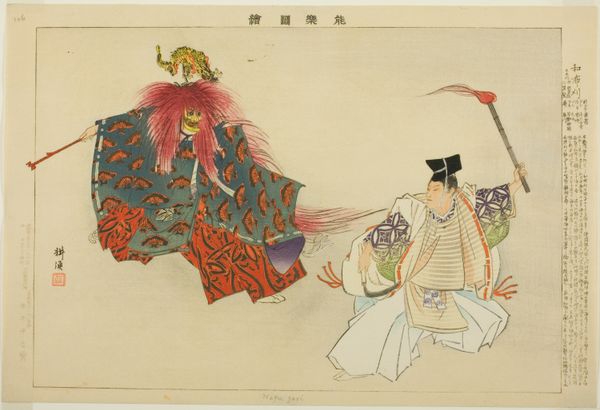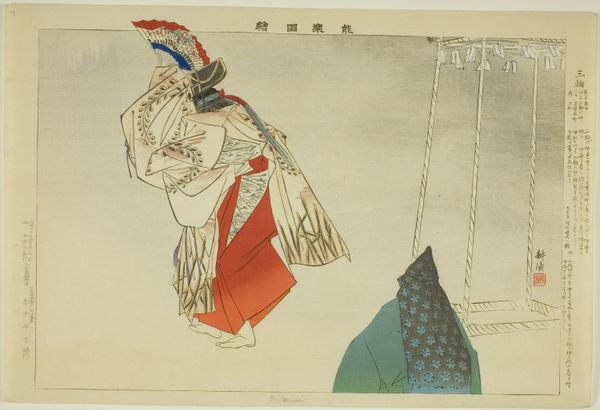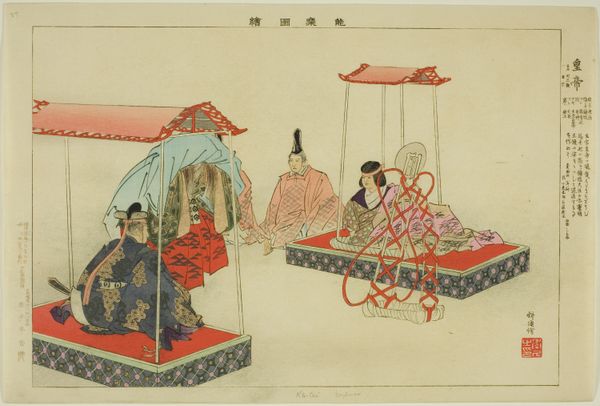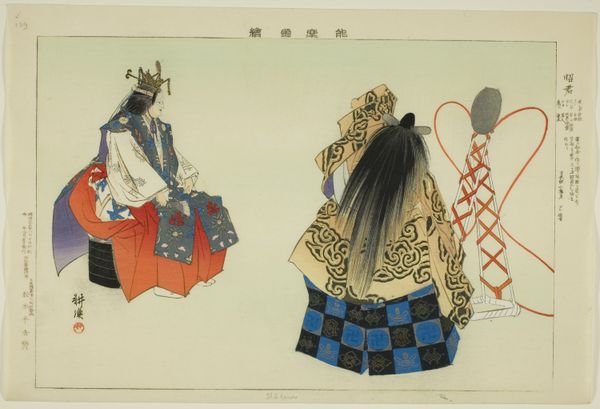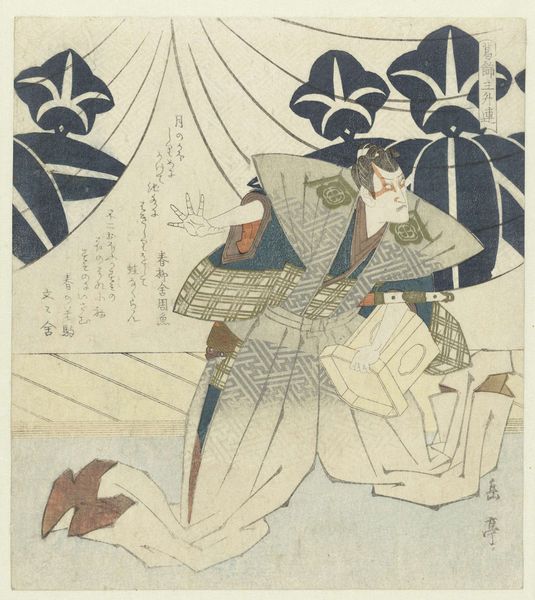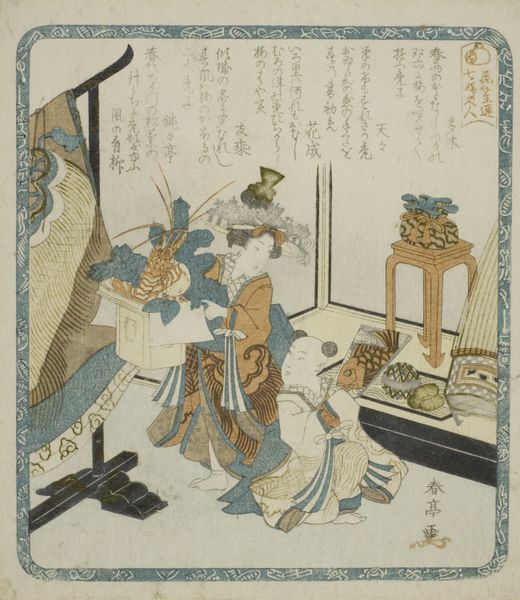
Sessho-seki, from the series "Pictures of No Performances (Nogaku Zue)" 1898
0:00
0:00
Dimensions: Approx. 25.2 × 37.4 cm (10 × 14 4/3 in.)
Copyright: Public Domain
Tsukioka Kôgyo made this woodblock print, Sessho-seki, as part of his series “Pictures of No Performances” sometime in the late 19th or early 20th century. It depicts a scene from a Noh play, a highly stylized form of traditional Japanese theatre. These plays were typically sponsored by feudal lords and were often performed for elite audiences. Kôgyo's print captures the theatricality of Noh, with its elaborate costumes, masks, and stylized gestures. The figure's demonic mask relates to folklore and religious beliefs of the time, reflecting anxieties about the supernatural and the spirit world. The artist himself was part of a cultural movement that sought to preserve and promote traditional Japanese arts in the face of rapid modernization. To fully understand this print, we might research the history of Noh theatre, the social and political context of Meiji-era Japan, and the artist's own biography and artistic influences. Through this kind of historical contextualization, we can better appreciate the complex meanings and values embedded in this seemingly simple image.
Comments
No comments
Be the first to comment and join the conversation on the ultimate creative platform.
